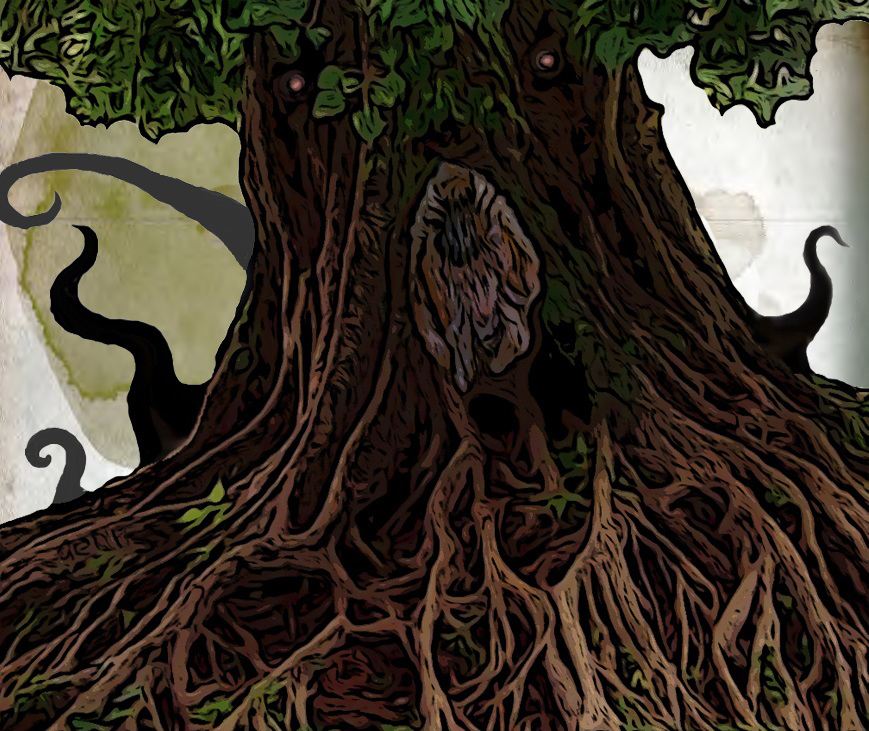Dreamkiller Tree
Dreamkiller trees are so known because of their method of predatory feeding and reproduction. As it grows, the tree will change its shape to resemble the dominant tree species in the area. When it is ready to reproduce, the dreamkiller produces pheromones which attract nearby animals, in combination with pollen which is both euphoric and soporific. Animals which escape the dreamkiller tree will carry the pollen to other dreamkillers in the area, while those which fall asleep near its roots will become prey.
The dreamkiller has primitive light-sensing organs which allow it to recognise the shapes of nearby trees. As it grows from a sapling, it will adjust its growth to blend in with the surrounding trees in a form of hunting camouflage. Its roots and trunk also possess a limited degree of motility, although it does not move while it detects movement nearby.
Once a dreamkiller tree has reached maturity, it begins to emit pheromones which attract animal life, most commonly small animals such as rabbits, foxes, and the like. When animals cluster around its roots, it releases a shower of pollen, to coat the animal's fur and for it to inhale. This pollen has euphoric properties, ensuring the animal will seek it out, and soporific, causing smaller animals to swiftly fall asleep. Pollen will also affect larger animals in greater quantities, so an animal which survives an encounter with one tree will not survive a second dreamkiller.
If a creature falls asleep near a dreamkiller's roots, roots emerge from the ground and gently convey the creature toward the trunk. What appeared as merely a split in the bark opens to reveal a cavity within the tree, and the animal is deposited within, still deeply asleep. The cavity closes and rootlets begin to burrow into the tree's prey. The rootlets introduce a poison into the creature, ensuring it never wakes. Once a victim is nothing more than a desiccated husk, the dreamkiller will begin a peristaltic motion of its trunk, disgorging the remains into the ground beneath its roots, where they will provide additional nutrients as they break down.
If the victim carries pollen from another dreamkiller, the pollen is conveyed into the tree's circulatory system and out to the flowers. Once a flower is fertilised, it forms a small fruit, which drops to the ground once ripe. Once the outer coating of the seed has been broken down in an animal's stomach acids, the seed splits to reveal a tangle of sharp barbs and tendrils, which unfurl within its prey and swiftly kill it. The unlucky animal thus becomes fertiliser for the new dreamkiller seedling.
Most humanoids are able to fight off the soporific effect of the pollen with relative ease, although the euphoric effect is still present. For those desiring rest, it provides a gentle, pleasant sleep with vague dreams the sleeper cannot recall. As a result, it is not uncommon for people living near dreamkiller trees to attempt to harvest the pollen, either for personal use or to sell to pollen dens in cities, where the pollen is concentrated in an alchemical process which increases its euphoric effect.
The harvesting process is not without risk, however, as overexposure to the pollen can render even an alert adult deeply unconscious. It is common for pollen harvesters to be accompanied by a person who stays out of range, holding onto the ends of ropes tied around the harvesters so they can be dragged out of danger. Those who cannot arrange to be accompanied will eventually inevitably fall prey.



Comments